Sign up for Meridian’s Free Newsletter, please CLICK HERE
The MTC—where the design began to be revealed

Whenever we look back at peak moments in our lives (which we often don’t recognize as “peak” when they happen), we wonder at how easily the stars aligned and how blithely we stepped into a perfect design, though then we saw only a glimmer of light, suitable for just one step.
When my husband and I were called to serve in the Provo MTC, I somehow assumed that we’d be in a Spanish branch, since we’re both fluent in Spanish. Yes, my husband spoke French, but there was a bigger need for Spanish, wasn’t there?
My jaw dropped when the MTC president invited us to serve in a French-speaking branch.
That first Sunday in the MTC as we met our missionaries—each with a red dot indicating that it was their first day—I thought I was welcoming them into a glorious and difficult transformation and smiled comfortingly at them. I didn’t know that they were also welcoming me into my own transformation (equally difficult and glorious). When I said to each, “Welcome to your mission,” they generally replied, “Thank you.” Now that I know what our futures held, I realize that they should have answered, “Welcome to your mission, too, Sister Young.”
My husband and I met the missionaries assigned to our branch. Only men, American and Canadian, were being sent to the Democratic Republic of Congo from the Provo MTC. I took special note of them, knowing that they were headed to some unusual hardships. What I didn’t know was how they would connect me to Congolese Latter-day Saints and future Latter-day Saints who would change and even uproot our lives–my husband’s, mine, and my brother’s.
Paramount among these friends-to-be was Aime Mbuyi, who became the companion to one of our MTC missionaries. Since Aime’s famiy didn’t have internet, he’d wait patiently for the American missionaries to read and write their email every p-day in the Republic of Congo. Finally, our Elder Henry Lisowski asked me if I’d write to Elder Mbuyi.
Thus began the friendship which endures to this day—a decade later.
I learned about Aime’s past and thought his story would make a great film. And yes, a decade later we have made that film. This is what Aime told me then:
Before I joined the Church, I was in a revolutionary group. We had a camp which was like a boarding school. One of the purposes of this camp was to teach us to abandon the religious system brought by white men, and to return to the religion of our ancestors. At the camp, we lit a bonfire, sang songs, and we prayed to our ancestors. Someone called out to the ancestors and other dead ones and asked them to mingle with us. All of this was initiated by an African Catholic priest who was the leader of the camp. He also changed the way of celebrating Mass. It was no longer a Catholic Mass but a combination of Catholicism and African ancestor worship. We also watched documentaries about Patrice Emery Lumumba, the youth of Soweto and others. This ex-priest was building hate in us.
What a fascinating dilemma, and what a great story!
Aime continued: I had many destructive plans which I developed at the revolutionary camp, but I did not put them into action. The gospel changed my heart before I executed my plans.
He described his grandparents’ influence on his decision. I would meet them soon after receiving his email, though of course I couldn’t have known that then.
My grandparents joined the Church in July 2005 before I came back to live in Kinshasa after spending seven years in Tshikapa, where the revolutionary camp was located. My grandpa told me about the Church just once. He said that it was a good church. It gave the youth opportunities for a good education and helped them become good citizens of the country. He said many things about the Church, but I did not show that I was interested.

My mother tried to encourage me to visit the church. The next Sunday, I did. I did not inform anybody at home. I knew where the church was.
I entered. I passed the chapel and found myself in the bishop’s office. I told him that I was new in the church and that I did not know where to go. He showed me a class. Afterwards, I encountered the elders and we made an appointment. I do not remember what was taught that day at church, but I remember my impressions. I was impressed by the attitude of the young men my own age who blessed the sacrament. They were like angels.
As far as I was concerned, it was Aime who looked like an angel when I finally met him in 2014. I had traveled to the DR-Congo to witness Aime’s marriage to the beautiful Steffy Katakumbani and to do location scouting for the film.

Aime introduced me to Tshoper Kabambi, a remarkable Congolese man in his early thirties who had audaciously decided to make films in a country which had no cinema. I would learn Tshoper’s story, too, and would become as close to him as I was to Aime. Eventually, he would stay in our home as we edited the film based on Aime’s story.
I could not have predicted that I would someday meet Aime’s revolutionary leader—and that I would like him. I could not have predicted that there would be a temple in Kinshasa and that Aime would be the facilities manager. I could not have predicted that the remarkable Tshoper Kabambi would join the Church. I could not have predicted that as we went where we needed to go for filming (including to a distant village in central Congo), we would also uncover Tshoper’s lost family and would be able to facilitate a great reunion. I certainly could not have known that as we worked with Tshoper, we would kick-start the entire cinema industry in the DR-Congo.
This series, Heart of Africa, details those miracles.
I close this installment with more of Aime Mbuyi’s words describing his leaving the revolutionary group to serve God as a missionary for the Church of Jesus Christ of Latter-day Saints.
The knowledge of the plan of salvation gave my life a new orientation. But it was when I received the testimony from the Spirit that Joseph Smith was a true prophet of God and consequently that this work was true that I understood that I was actually struggling against God by my revolutionary group. I had a strong conviction that anyone who aims to bring division into the world instead of peace is not from God.
Many thoughts were coming into my mind. It was not easy to give up the struggle. I thought about the purposes of the revolutionary group, but even more about what I was fighting for. Thoughts were continuing to come into my mind telling me that God was the master of everything, that He knew everything, and that He could permit everything to happen for good purposes.
I felt a strong desire to share what I knew with people. I remember when I testified of Joseph Smith to my classmates. I still remember those feelings I had. After a few weeks in the Church, I was already nicknamed “the Mormon” or ” man of justice”(“homme de la justice”) at school.









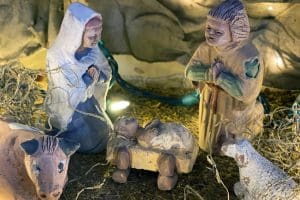





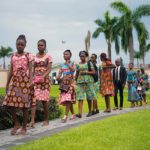
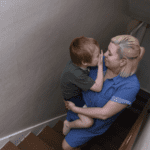
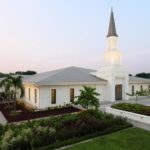
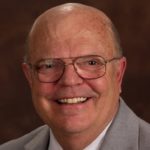

Barbara BohanNovember 4, 2019
I have followed from afar from time to time the progress of this film starting in the very early stages. I am excited that it is a reality now and coming in December!
Francis NmeribeOctober 30, 2019
Wow! This is an amazing story. I can feel the hand of God in all of it. "His purposes would ripen fast, unfolding every hour", one of our hymns say. Thank you Sister Young for your sacrifices in making this unfolding to happen.